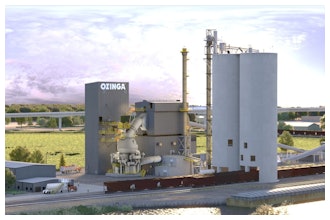
The 2020s have been – in a word – relentless.
First came COVID, then inflation. Now, distributors face further uncertainty as they struggle to predict just how tariffs will impact their businesses.
This year’s Survey of Distributor Operations had several similarities to the results we saw last year, when soft business conditions and margin pressures told the story of an industrial market on its heels.
You might call 2025 more of the same – and then some – but with some notable shifts. Some of the areas we see changing are those around confidence, as well as projections as to where distributors see their 2025 heading. For many, uncertainty is adding pieces to an already complex puzzle, and their responses have reflected some unease as they go forth.
As always, Industrial Distribution’s Survey of Distributor Operations aims to provide a snapshot of the industry and how distributors are faring across an array of operating areas. The coming pages will examine seven main categories:
- Demographics — establishes a profile of survey respondents based on company size, years in business, sales volume and product lines.
- Challenges, Trends & Economy — outlines the initiatives distributors are undertaking to address key business and market concerns, as well as mergers and acquisitions and how distributors view the impact of the economy.
- Tech Usage & Investments — covers areas like e-commerce and other big-impact technology solutions for now and the future.
- The Balance Sheet — offers insights into revenues and profitability, addressing areas of investment and concern, along with other analysis of factors impacting revenue.
- Best Practices — sheds light on distributor relationships with suppliers and customers, as well as their global business plans and what challenges are involved.
- Value of the Distributor — addresses the reasons our survey respondents believe customers do business with them, and which service offerings play a significant role in the industry.
- Employment — identifies hiring and layoff trends, recruitment and retention strategy.
Methodology
The results of this study are based on an email survey sent to Industrial Distribution subscribers in April and May of 2025 with a collection time of three weeks. Recipients of the survey were offered an incentive to complete the questionnaire. The majority of the ID subscriber base is comprised of readers who identify as executive, upper management, sales or sales management. Results are based on our pool of survey respondents within this subscriber base.
Comments on this year’s results? Email ID executive editor Anna Wells at [email protected].
Demographics
Distributors participating in this year’s survey reflected the industry’s entire spectrum of geographies, histories and scales, but a few patterns that have emerged over the years remained true in 2025.
Companies from the Midwest made up the largest share of respondents to this year’s poll with more than 37% hailing from that part of the U.S. The Northeast, once again, followed in second place at 13%, but the Southeast region wasn’t far behind at 11%. Nine percent characterized their business as located in the West, followed by 8% in the Southwest and 6% in the South. About 15% of respondents indicated that their company was based outside the U.S.
The vast majority of participating companies also indicated that their business has been around for decades: 44% said their distributor was 50 or more years old, while 36% said their company was 25 to 50 years ago. Eight percent tabbed their company at between 10 and 25 years of age, while 11% were established less than a decade ago. Nearly 73% also indicated that their company was family-owned.
Smaller distributors, meanwhile, made up the largest share of companies responding to this year’s survey: just shy of 31% reported that their company posted 2024 revenues of less than $10 million. The largest companies in the industry – with at least $500 million in annual revenue – were the second-largest share, but at about half the overall percentage at 16%. Other revenue amounts, broken down at the $20 million, $50 million, $100 million and $250 million levels, accounted for between 10% and 13% of respondents.
Distributors in this year’s poll accounted for a vast array of product categories, as expected, but the most commonly offered items were MRO supplies (carried by 46% of respondents), personal protective equipment (44%) and safety supplies (42%). More than 95% of companies said that the number of product lines that they carried either increased or remained the same compared to last year.
The most common end markets for this year’s participants – also likely as expected – were manufacturing and processing (85%) and construction (69%); those were followed by original equipment manufacturers (57%), machine shops (55%) and the energy and government segments, each of which drew 49% of participating distributors.
Challenges, Trends & the Economy
Distributors in this year’s survey again identified economic conditions among their top concerns – to the tune of more than 70% – but another commonly identified concern highlighted a relatively new issue, albeit a closely related one.
A virtual afterthought for decades as policymakers increasingly embraced free trade and companies formed globe-spanning supply chains, tariffs roared to the forefront of the world’s economic affairs as a new administration in Washington threatened, levied or – in some cases – pulled back heavy new taxes on imports to the U.S.
Tariffs, in turn, also have the full attention of the distribution sector — one that’s, of course, particularly ensnared in, and affected by, changes in global supply chains. More than 56% of survey respondents this year pointed to tariffs as a top concern — the second-most-identified issue in this year’s edition of the poll.
Among other prominent challenges, staffing issues continue to plague distributors: nearly 37% highlighted problems finding additional qualified people in the third-most common response. Nearly one-third cited increased operating costs, but although inflation also remained a top concern, the number of distributors singling it out slipped to below 30%.
In perhaps another reflection of an uncertain economy, meanwhile, a frequent concern in past surveys – the prospect of mergers or acquisitions – w as identified by fewer than 8% of respondents this time around. Ten percent of respondents said that their company was acquired during the past 12-month window, while another one-fifth said that their company was approached about a deal but did not go through with one.
Nearly 46% of participants said their company was not approached about a merger, and about one-quarter said that their distributor had made a bid to acquire another company. Sixty percent of respondents said that they were not actively looking to buy another distributor, and roughly the same percentage as last year – 62% – indicated that they would not be open to a buyout.
Amid seemingly persistent economic uncertainty, distributors once again pointed to growing sales among their existing customers (73%) and adding to that customer base (70%) as their top priorities for generating growth. Other strategies lagged well behind those top two, but about 35% said that they aimed to take market share from specific competitors, the same share intended to grow internet sales, and just shy of one-third planned to focus their attention on growing industries.
Tech Usage & Investment
This year’s survey again identified CRM systems, online ordering and ERP systems – which were also, again, three of the most common tech systems deployed by poll participants – as the most impactful to distributors’ operations.
More than 60% of respondents said their company utilized CRM software and e-commerce, trailing only wireless internet among tech options in the survey. ERP was used by half of participating distributors. About 40% of participants used warehouse management systems, followed by demand forecasting systems at 30% and perhaps the industry’s most buzzed-about technology – AI – at 29%. Nearly 60% of survey respondents, meanwhile, said that their companies used business intelligence and data analytics technology to make decisions.
AI continued to lag behind other systems in its impact on distributors’ business – about 10% singled it out, compared to more than one-third pointing to CRM – but AI was easily the technology that respondents anticipated adopting the most over the next two years: more than 43% expect their companies to deploy AI during that timeframe.
Trailing in second behind AI in anticipated new technologies in the coming years, however, was e-commerce at 30%. Even though more than 60% of respondents said that their company already utilized e-commerce – and more than two-thirds characterized e-commerce as a priority for their respective businesses – about 48% of companies said that e-commerce accounted for less than 10% of overall sales.
Most respondents – nearly 78% – nonetheless expect their company’s online sales to increase this year, and the remainder expect those sales to remain flat — no respondents reported that they were expecting a decline. Participants were nearly split, however, on the importance of an omnichannel experience: 47% characterized it as important, and 43% did not.
Distributors in the 2025 survey continued to use company websites predominantly as a marketing tool: at 55%, marketing was the most-identified application, followed by hosting product and technical information at nearly 48%. E-commerce trailed in third at 43%, followed by generating leads (36%), finding new customers (30%), tech support (21%) and generating orders (20%).
Respondents said that their companies tend to update those websites frequently — either daily or weekly (37%) or monthly (29%). Around one-fifth post updates “every few months,” and about 15% make changes “hardly ever.” As for larger-scale changes, nearly 40% of participants said their company had redesigned its website in the last year, and that another 35% had overhauled sites in the past three years. Another 6% plan to conduct a redesign this year, but 19% of responding distributors said it had been at least three years since a website redesign — or that they can’t recall.
The Balance Sheet
Last year, 65% of our survey respondents anticipated sales increases for the year ahead. Unfortunately, the picture realized was less rosy for some than expected.
Instead, around half of survey respondents tell us their sales have increased year-over-year, which is a figure that generally falls in line with what our readers reported last year. This implies a second year running where sales increases have not been a foregone conclusion, a departure from 2022 and 2023, where 83% and 72% - respectively - said sales had gone up.
Of last year’s respondents, 19% reported sales declines, compared to 22% who said the same this year.
Fewer expect to see sales increases next year than said the same in ‘24, but not by much — 63% believe their sales will go up and 29% believe they will remain generally the same.
When it comes to margin, 44% of our respondent pool cited profit increases in the past year — a similar mark to last year’s results but, again, a striking decline from 2023, when 75% of businesses reported profit increases.
When looking at the role inflation has played in distributor profitability, we see the following:
- 13% say inflationary pressures have significantly shrunk their margins.
- 29% characterize that margin shrinkage as “moderate.”
- 34% say inflation has had little noticeable effect on their margins.
- 30% note impacts but say they’ve raised prices to counteract it.
Digging into the context, we see fewer companies citing margin shrinkage year-over-year (46% in ‘24 compared to 42% in ‘25). However, the segment of those companies who see the impact as significant has increased (13% this year compared to 7% last year), suggesting that some companies are still seeing downsliding profitability with inflation to blame.
The other big variable the industry is tracking heavily is the impact of tariffs. This generated a brand new question for our respondents this year: “How would you best characterize the impact of tariffs on your business?”
Fewer than one in 10 respondents said that tariffs have had no impact so far. As for many of the rest – permitted to select all that apply – the tariffs are a heavy hit:
- 63% say tariffs have increased their costs.
- 62% say tariffs have caused them to increase prices.
- 59% say tariffs have resulted in uncertainty that impacts business decisions.
- 48% say tariffs have caused them to reevaluate their supplier base.
- 33% say tariffs have caused customers to pull back.
While distributors will most certainly take time getting their arms around this situation, especially as it continues to evolve, we do see many falling back on tried-and-true methods as they nonetheless look to grow their businesses. More than half say they’ll increase advertising/marketing, sell more via e-commerce and/or add more product lines. Lower on the priority list is doing business overseas, which fewer than 4% of companies responding say they consider a current growth tactic.
Come back tomorrow for Part 2 of ID's 2025 Survey of Distributor Operations, covering best practices, employment trends, and how distributors are providing value for their customers.























